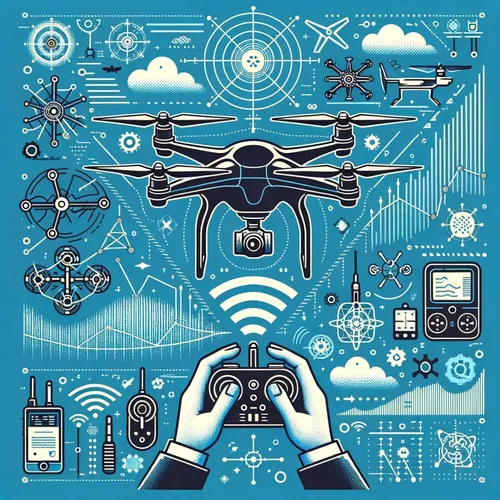Drones: The Billion-Dollar Tech Transforming Industries and Raking in Massive ROI
- Author
- Quiet. Please
- Published
- Wed 06 Aug 2025
- Episode Link
- https://www.spreaker.com/episode/drones-the-billion-dollar-tech-transforming-industries-and-raking-in-massive-roi--67267654
This is you Commercial Drone Tech: Enterprise UAV Solutions podcast.
Enterprise drone technology is rapidly transforming major industries, offering unmatched efficiency gains and valuable data-driven insights across construction, agriculture, energy, and infrastructure inspection. Leading platforms like DJI FlightHub 2 and AirData UAV have helped businesses scale from single UAV operations to fully integrated, cloud-managed fleets, enabling real-time situational awareness, seamless mission planning, and automated compliance. Deloitte recently reported that the global commercial drone market surpassed 30 billion dollars in 2024, and is expected to grow at an annual rate exceeding 10 percent as drone adoption expands in new sectors.
Specific use cases highlight the technology’s impact: construction firms deploy drones for progress monitoring, volumetric calculations, and safety compliance, achieving faster project turnaround and fewer on-site risks. In agriculture, drones enhance crop health analysis through multispectral imaging, optimize pesticide application, and increase yields while lowering costs. Energy and infrastructure companies use UAVs to conduct inspections of power grids, pipelines, and bridges, minimizing downtime and reducing worker exposure to hazardous environments. For instance, a recent case from the U.S. energy sector saw a drone program drive annual savings of nearly one million dollars by cutting labor hours and improving maintenance schedules.
ROI analysis consistently shows that enterprise UAV programs yield measurable value when paired with robust fleet management and integration strategies. Management solutions like Azuga and Aloft offer real-time data capture, maintenance management, route optimization, and safety oversight, all while supporting regulatory requirements such as the FAA’s Remote ID and LAANC airspace authorizations. FlytBase, an enterprise autonomy solution, takes integration a step further by embedding AI and cybersecurity at the edge, allowing drones to share data securely across existing enterprise resource planning and asset management systems.
Compliance and security are top priorities. Platforms built with enterprise-grade encryption and SOC2 or ISO27001 certifications, such as those from Aloft and FlytBase, ensure data integrity and regulatory adherence. Comprehensive training programs have become the norm, with software providers and consultancies offering tailored onboarding to reduce the learning curve and maintain safety standards as fleets grow.
Recent news underscores the pace of innovation: new FAA waivers for beyond visual line of sight missions, the first automated drone-in-a-box deployments for refinery inspections, and record-setting agricultural yield boosts through advanced UAV analytics have all made headlines this month. Looking ahead, autonomous drone fleets, powered by edge AI and seamless cloud integration, are expected to drive even further shifts—unlocking persistent aerial monitoring, instant damage assessment, and predictive maintenance at scale.
For enterprises considering drone investments, start with a detailed needs assessment, pilot a scalable fleet management solution, institute robust compliance protocols, and invest in ongoing staff training. This approach is essential to capturing both immediate efficiency gains and long-term strategic value. Thank you for tuning in—come back next week for more. This has been a Quiet Please production and for me check out Quiet Please Dot A I.
For more http://www.quietplease.ai
Get the best deals https://amzn.to/3ODvOta
